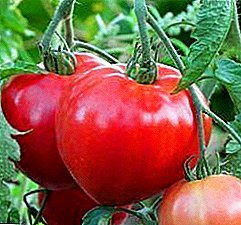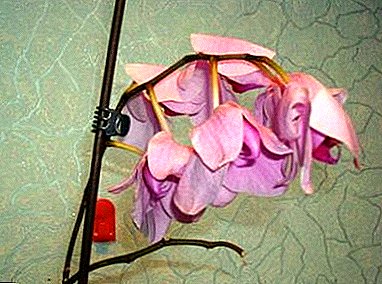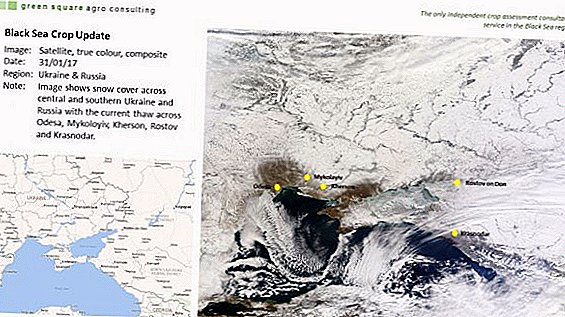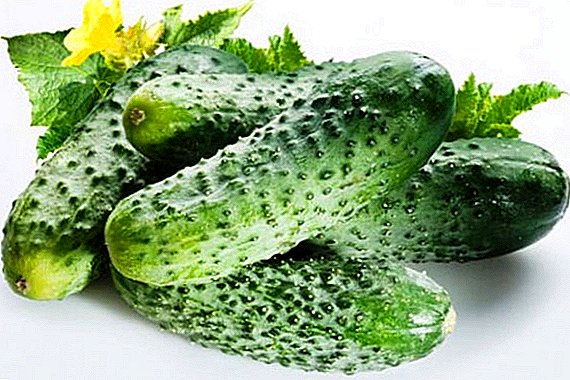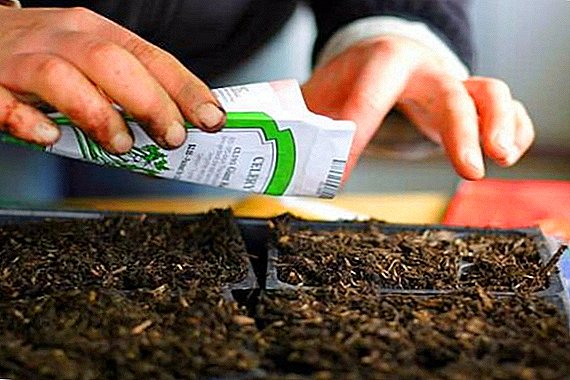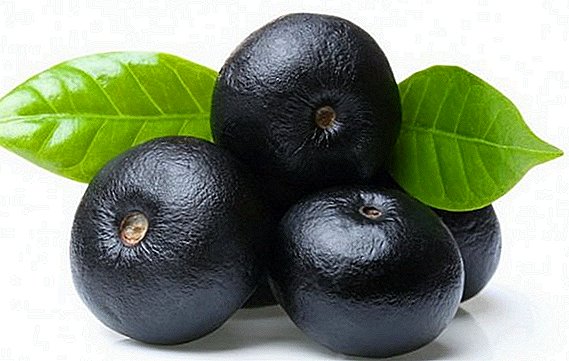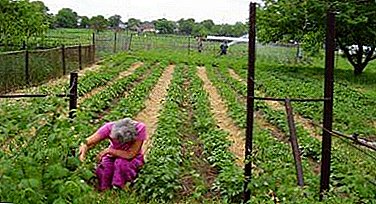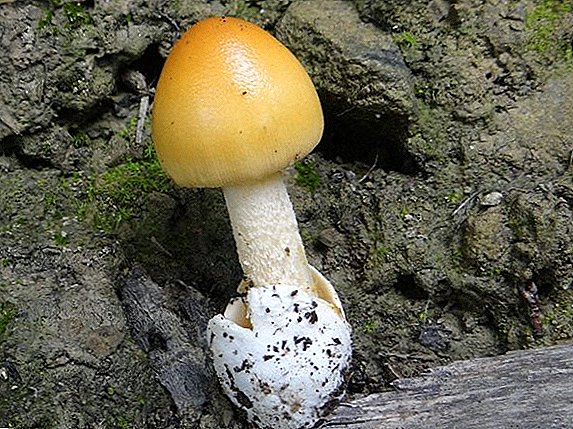
In our latitudes, the mass of mushrooms is growing, but few people take it seriously. This is a delicate matter, requiring experience and certain knowledge. After all, even in an ecologically clean wilderness, you can see a “doubtful” mushroom, which seems to be similar to an inedible, but at the same time different from it. One of these types are pushers who deserve a separate description.
General information
Pusher, they are floats - This is a whole section of mushrooms from the genus Amanita. Because of this "kinship" they are assigned to conditionally edible. 
Floats are considered medium sized mushrooms. Here are their Key Features:
- Hat grows to a maximum of 10-12 cm in diameter and may have a bell-shaped or round-conical shape. As it grows, it becomes flat, and a characteristic tubercle is seen in the center.
- Most meaty central part, while the edges are thinner.
- Hat color may be white, gray, brown, brown or orange. In any case, the upper part is smooth and shiny.
- Thin and fragile the pulp when cut, it practically does not change the color, remaining white (although a cream shade is sometimes noticeable near the edges of the cap).
- Leg 6–15 cm high and up to 2 cm in diameter — smooth or covered with an ornament (small patina). In the lower part it expands a little, but without the swelling that is usual for other mushrooms. Colors: white, gray or matching hats.
- Hconvex shaped plates. In places of expansion small plates are visible. In the "young" they are white, and in older instances - with a yellow tinge.
- Film residues (Volvo) immersed in the soil and visible at the base of the fungus. Their wide bag-shaped form catches the eye.
Important! Edible mushrooms are not recommended for gathering near busy roads, railways, as well as in the forests adjacent to cities.Experienced mushroom pickers know that edible pushers have another characteristic feature, namely, the absence of a ring on the leg. Many are misleading the film or warty flakes on the cap - they are quite rare and are easily removed.
The nutritional value
By virtue of their nutritional qualities and the degree of assimilation by the body, the floats are listed as mushrooms, rarely eaten (the so-called IV category). That is, they do not represent special value. 
On the other hand, they still contain the main proteins, fats in the form of polyunsaturated acids and carbohydrates. There are vitamins of group B, and also a relatively large amount of phosphorus and potassium.
Familiarize yourself with the types of popular edible mushrooms, especially such as flakefish, cheesy, shiitake, russula, poplar rowing, boletus mushrooms, chanterelles, black truffle, redhead, aspen, white mushrooms, honey agaric.
Like all mushrooms, are considered low-calorie (20-30 kcal per 100 g, depending on the type and processing).
Where can I meet
In regions with a temperate climate, pushers grow in light forests of various types (coniferous, mixed, deciduous). Also come across well-lit edges or just in the tall grass.
Did you know? In the forests of North America, black floats grow, which are called royal for size: a cap diameter is 15 cm (and this is with a leg length of 25-27 cm).Some species grow one by one, while others usually go in groups. Often, the mushroom-float can be seen on peatlands and acidic soils. Another favorite location of some species is closer to the trunks of coniferous trees or birches.
Mushroom species
The most widespread of edible species is Gray pusher.
It can be recognized by its gray or ocher color, small (4-8 cm) and a fragile cap. Closer to the center of the shade darkens. Ovoid-bell-shaped form, less often - flat, but always with ribbed edges.

The leg (on average 5-12 cm) is placed in a white Volvo and does not have a ring in principle. Variations of its color - white, beige, gray. The plates are free and have a white color.
Better time to collect - from July to October. Grow one by one, which is compensated by a large number.
In the forests there are also instances of other lines with similar sizes, namely:
- Tan brownwhich is interesting with its hat. White at the edges, it gradually changes its color to brown, and a little higher orange tones are added, which in the center become dark. Volva is brownish at the base, and there is never a ring on the leg.
- Rarer saffron. The main difference is the saffron-orange cap with a darkening in the center. The same color is inherent in the leg (as well as white). Plates often have a yellow color. It occurs less frequently, mainly in the swamps (both singly and in small groups).
- Umber yellow (he is the amanita of Battarra) with a dark center and a yellow-olive or gray-brown "border". In tone to the cap and leg with small scales, immersed in a light gray Volvo.
- White. On the stem with pale scales, an ovate or flat cap with a tubercle is centered (sometimes up to 10 cm in diameter). The whitish flesh is fragile and crumbles well. Rare species, grows in mixed and deciduous forests, in birch trees (with which it forms mycorrhiza).
- Snow white. This is the smallest species - with a stem of 7-10 cm, the size of the cap varies from 3-7. Young mushrooms show characteristic flakes. With age, they disappear, and the color of the legs changes: from white it turns into a dirty gray. This line has been little studied, and even experienced mushroom pickers usually bypass it.





More rare varieties are presented. webbed, olive green and lead gray copies. The names indicate the main differences of mushrooms. True, due to inexperience they are easily confused with poisonous species.
Important! If the fungus is in doubt, in no case do not take it in food.
How to distinguish from inedible and poisonous mushrooms
One of the reasons for the low popularity of pushers - their similarity with inedible lines (especially with fly agarics and pale toadstools).
Going to the "quiet hunt" to gather up the floats, it is worth remembering main characteristics of species, edible:
- The absence of a ring on the leg. The edible mushroom does not even have it in the form of barely noticeable contours.
- The same applies to the beard belts.
- The remnants of the film-cover, which protects the cap during growth.
- Pronounced scars on its edges (they are hardly visible in poisonous toadstools).
- The fragility of the legs and caps. This is a minus during transportation, but a sure way to determine which mushroom is in your hands. Edible is easy to damage - both the cap and the thin leg crumble.
Did you know? Mushrooms are extremely tenacious: they are not afraid of either radiation or high pressure (up to 8 atm). Moreover, experiments in near-earth orbit have shown that they survive at altitudes up to 30 thousand meters.It is possible to distinguish a pusher from a toadstool by the smell - in the latter he often acquires sharp sweet sugary notes (whereas an edible mushroom does not give a tangible flavor).
Video: how to distinguish pushers from inedible and poisonous mushrooms
Cooking Application
Gourmets do not particularly like these mushrooms: taste qualities they are very mediocre, without a special "highlight" (the only exception is the white appearance with a more subtle taste).
There is a reason for this: during growth, resinous compounds accumulate in the fruit body, which, if improperly prepared, are harmful to the stomach.
It will be useful for you to learn how to freeze mushrooms correctly: white, oyster mushrooms, wild mushrooms, champignons, how to marinate, how to dry mushrooms.
To avoid such difficulties, is required Preliminary processing mushrooms in several stages:
- Damage cleaning.
- Thorough washing with the removal of peeled flakes and falling off pieces.
- Cooking for 45-50 minutes (but better to withstand an hour).

These techniques are used before cooking fried and boiled dishes with the participation of pushers, as well as cakes and salads. If the collection is intended for pickling, then the scalding is not carried out.
Important! The safe frequency of taking any mushroom dishes - a maximum of 2 times a week. People with peptic ulcer and pancreatitis, pregnant and lactating women, as well as babies, are completely contraindicated.
Most often, these mushrooms are used as an ingredient soups. The cooking algorithm is as follows:
- The cleaned floats are washed and placed in a large pot.
- Bay water boil them for at least 45 minutes.
- After that, the mushrooms are removed, washed again and only then crumbled.
- Then put potatoes in a pan, finely chopped carrots and mushroom cubes in a pan.
- All this is poured with water, spices are added to taste and boiled until fully cooked potatoes.
- In the final dish is filled with sour cream, not forgetting about chopped greens.
Not bad these fungi and as an additive to fried potatoes. Here, no cooking. If you miss this point, a shock dose of carcinogens will enter the body, and the consequences can be very serious.  In general, accuracy and caution when collecting data from mushrooms and working with them should be in the first place.
In general, accuracy and caution when collecting data from mushrooms and working with them should be in the first place.
Now you know what are the pushers, how they are and where to look for them. We hope our readers will show maximum prudence and familiarity with such gifts of the forest will be safe. Take care of yourself and let every day bring only positive!


